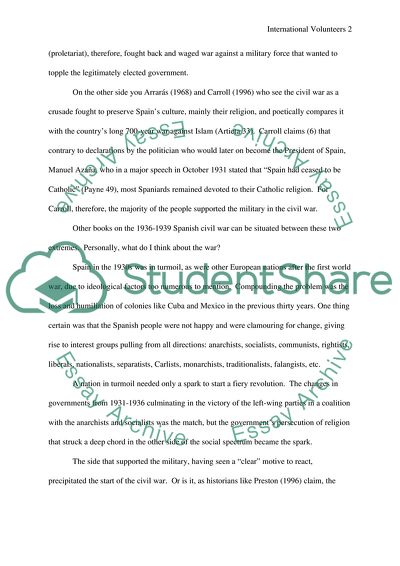Cite this document
(International Volunteers in the Spanish Civil War Essay, n.d.)
International Volunteers in the Spanish Civil War Essay. Retrieved from https://studentshare.org/history/1536018-history-civil-war-and-dictatorship-in-spain-was-it-justified-to-describe-the-international-volunteers-who-fought-for-the-republic-during-the-spanish-civil-w
International Volunteers in the Spanish Civil War Essay. Retrieved from https://studentshare.org/history/1536018-history-civil-war-and-dictatorship-in-spain-was-it-justified-to-describe-the-international-volunteers-who-fought-for-the-republic-during-the-spanish-civil-w
(International Volunteers in the Spanish Civil War Essay)
International Volunteers in the Spanish Civil War Essay. https://studentshare.org/history/1536018-history-civil-war-and-dictatorship-in-spain-was-it-justified-to-describe-the-international-volunteers-who-fought-for-the-republic-during-the-spanish-civil-w.
International Volunteers in the Spanish Civil War Essay. https://studentshare.org/history/1536018-history-civil-war-and-dictatorship-in-spain-was-it-justified-to-describe-the-international-volunteers-who-fought-for-the-republic-during-the-spanish-civil-w.
“International Volunteers in the Spanish Civil War Essay”. https://studentshare.org/history/1536018-history-civil-war-and-dictatorship-in-spain-was-it-justified-to-describe-the-international-volunteers-who-fought-for-the-republic-during-the-spanish-civil-w.


